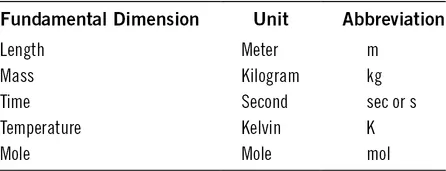
eBook - ePub
Basic Transport Phenomena in Biomedical Engineering
Ronald L. Fournier
This is a test
Partager le livre
- 654 pages
- English
- ePUB (adapté aux mobiles)
- Disponible sur iOS et Android
eBook - ePub
Basic Transport Phenomena in Biomedical Engineering
Ronald L. Fournier
Détails du livre
Aperçu du livre
Table des matières
Citations
À propos de ce livre
- Presents a basic understanding and the theories of transport in biological systems
- Uses real-world applications in the development and design of artificial organs, drug delivery systems, and tissues
- Contributes numerous examples throughout the text with a strong discussion of the numerical methods used
- Updates each chapter with the latest research developments
- Incorporates new problems and selected complete solutions where appropriate
Foire aux questions
Comment puis-je résilier mon abonnement ?
Il vous suffit de vous rendre dans la section compte dans paramètres et de cliquer sur « Résilier l’abonnement ». C’est aussi simple que cela ! Une fois que vous aurez résilié votre abonnement, il restera actif pour le reste de la période pour laquelle vous avez payé. Découvrez-en plus ici.
Puis-je / comment puis-je télécharger des livres ?
Pour le moment, tous nos livres en format ePub adaptés aux mobiles peuvent être téléchargés via l’application. La plupart de nos PDF sont également disponibles en téléchargement et les autres seront téléchargeables très prochainement. Découvrez-en plus ici.
Quelle est la différence entre les formules tarifaires ?
Les deux abonnements vous donnent un accès complet à la bibliothèque et à toutes les fonctionnalités de Perlego. Les seules différences sont les tarifs ainsi que la période d’abonnement : avec l’abonnement annuel, vous économiserez environ 30 % par rapport à 12 mois d’abonnement mensuel.
Qu’est-ce que Perlego ?
Nous sommes un service d’abonnement à des ouvrages universitaires en ligne, où vous pouvez accéder à toute une bibliothèque pour un prix inférieur à celui d’un seul livre par mois. Avec plus d’un million de livres sur plus de 1 000 sujets, nous avons ce qu’il vous faut ! Découvrez-en plus ici.
Prenez-vous en charge la synthèse vocale ?
Recherchez le symbole Écouter sur votre prochain livre pour voir si vous pouvez l’écouter. L’outil Écouter lit le texte à haute voix pour vous, en surlignant le passage qui est en cours de lecture. Vous pouvez le mettre sur pause, l’accélérer ou le ralentir. Découvrez-en plus ici.
Est-ce que Basic Transport Phenomena in Biomedical Engineering est un PDF/ePUB en ligne ?
Oui, vous pouvez accéder à Basic Transport Phenomena in Biomedical Engineering par Ronald L. Fournier en format PDF et/ou ePUB ainsi qu’à d’autres livres populaires dans Medicina et Biotecnologia in medicina. Nous disposons de plus d’un million d’ouvrages à découvrir dans notre catalogue.
Informations
Chapter 1Introduction
Before we can begin our study of biomedical engineering transport phenomena, let us first review some basic concepts that are essential for understanding the material in this book. You may have come across some of this material in other courses such as in chemistry, physics, and perhaps thermodynamics. Reviewing these concepts once again is still very important since these concepts form the basis of our approach to analyzing and solving biomedical engineering problems.
1.1Review of units and dimensions
1.1.1Units
Careful attention must be given to units and dimensions when solving engineering problems; otherwise, serious errors can occur in your calculations.
Units are how we describe the size or amount of a dimension. For example, a second is a common unit that is used for the dimension of time. In this book, we use primarily the International System of Units, which is also known by its abbreviation SI, for Système international d'unités. Other systems of units are also used, such as the English and American engineering systems and the centimeter-gram-second (cgs) system. We will come across some of these non-SI units as well in our study. The units of these other systems may be related to the SI units by appropriate conversion factors. Table 1.1 provides a convenient summary of common conversion factors that relate these other units to the SI system.
Table 1.1 Conversion Factors

It is important to remember that in engineering calculations you must always attach units to the numbers that arise in your calculations, unless they are already unitless. Furthermore, within a calculation, it is important to use a consistent system of units, and in this book we recommend that you work with the SI system. In the event that a number has a non-SI unit, you will first need to convert those units into SI units using the conversion factors found in Table 1.1. Also, remember to treat the units associated with a number as algebraic symbols. Then, as long as the units are the same, you can perform operations such as addition, subtraction, multiplication, and division on the like units, thereby combining and, in some cases, even cancelling them out.
1.1.2Fundamental dimensions
The measurement of the physical properties we are interested in are derived from the fundamental dimensions of length, mass, time, temperature, and mole. Table 1.2 summarizes the basic SI units for these fundamental dimensions. The SI unit for length is the meter (m) and that for time is the second (sec).
Table 1.2 SI Units for the Fundamental Dimensions

1.1.2.1Mass and weight
The mass of an object refers to the total amount of material that is in the object. The mass is a property of matter and is the same no matter where the object is located. For example, the mass of an object is the same on Earth, on Neptune, or if it is just floating along somewhere in space. In SI units we measure the mass of an object in kilograms (kg). Remember that the mass of an object is different than the weight of an object. Weight is the forc...